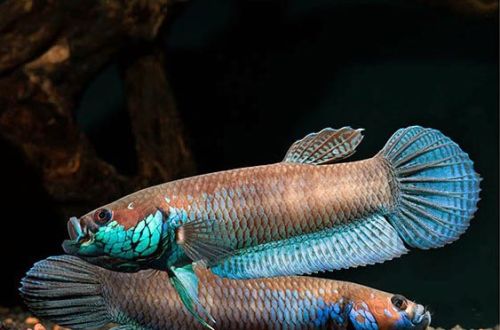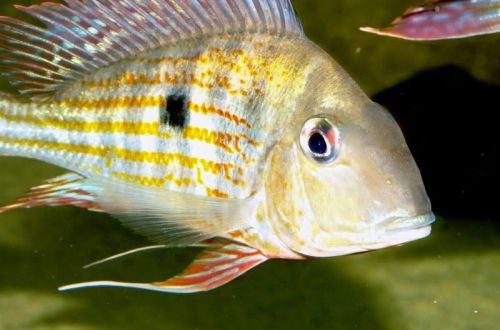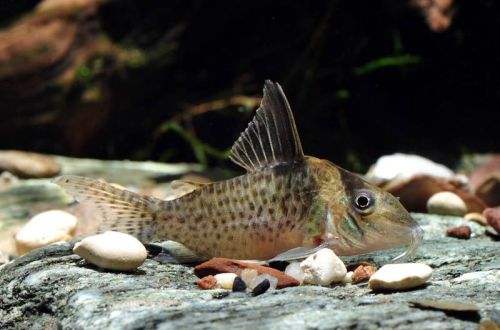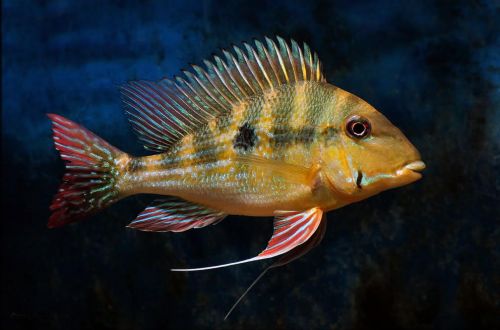
betta pale
Pale Betta or Pale Cockerel, scientific name Betta pallifina, belongs to the Osphronemidae family. The name speaks for itself, their coloration is not replete with colors in comparison with representatives of related species. It is considered a rather temperamental fish, but all its activity usually does not go beyond the population, without spreading to other inhabitants of the aquarium.

Contents
Habitat
It comes from Southeast Asia from the Indonesian part of the island of Borneo, the province of Central Kalimantan. Found in the upper reaches of the Barito River basin. Inhabits sections of rivers flowing through hilly areas among tropical rainforest. The water is clean and transparent, along the coast there are many aquatic plants that go deep into the water, forming dense clusters. The bottom consists of sand and small pebbles mixed with plant material (fallen leaves, tree branches, etc.).
Brief information:
- The volume of the aquarium – from 70 liters.
- Temperature – 22-27°C
- Value pH — 5.5–7.5
- Water hardness – 1–5 dGH
- Substrate type – any
- Lighting – subdued
- Brackish water – no
- Water movement – weak or absent
- The size of the fish is 8–9 cm.
- Food – any food
- Temperament – peaceful
- Content – in a small aquarium singly or in a pair of male / female
Description
Adults reach a length of 8–9 cm. The fish has an elongated, strong cylindrical body. The fins are short, with the exception of the anal fin, which extends from head to tail. The color is gray with reddish tints. In males, unlike females, the scales in the head area have a greenish or blue tint, which becomes more intense during the spawning season. Pigment of the same color is present on the fins.
Food
In nature, it feeds on small insects, their larvae and other invertebrates. Acclimatized fish and those that have lived in aquariums for several generations have successfully adapted to alternative foods. For example, a daily diet may consist of popular dry foods (flakes, pellets) combined with live or frozen brine shrimp, daphnia, bloodworms, etc.
Maintenance and care, arrangement of the aquarium
The optimal size of the aquarium for one pair of fish starts from 70 liters. Not demanding for registration. Many breeders and pet stores often use half-empty tanks, where there is practically nothing but equipment. For temporary detention, this is acceptable, but in the long term, other conditions will be required. It is desirable to provide several potential hiding places, which can be natural intertwined driftwood, thickets of plants, and decorative objects. The lighting level is subdued. An additional means of shading will also be plants floating on the surface. In general, the design is a matter of personal taste, possibilities and imagination of the aquarist.
As for the requirements for the environment, they are much stricter. The pale cockerel needs warm, slightly acidic, soft water, rich in oxygen, and does not tolerate the accumulation of organic waste. Maintaining balance in the biological system of the aquarium depends entirely on the regularity of maintenance (water changes, removal of excrement, food residues) and the smooth operation of equipment, in particular the filtration system.
Behavior and Compatibility
Belongs to the group of fighting fish. Males tend to fight each other for dominance in the intraspecific hierarchy. Although their fights rarely result in injury, the weaker individual will be forced to take refuge on the periphery and may not receive the proper amount of food. In small tanks, it is desirable to keep alone, or in a pair of male / female. They are calm in the presence of other species, compatible with many non-aggressive fish of a comparable size.
Breeding / breeding
For many Bettas, it is typical to bear eggs in their mouths, which guarantees a high survival rate of offspring, unlike those fish that simply spawn on the ground or among thickets of plants. With the onset of the mating season, the male and female begin long courtship. Spawning is accompanied by a kind of “hugging dance”, during which the fish seem to wrap their bodies around. Fertilized eggs immediately end up in the male’s mouth. The incubation period lasts 10-17 days, all this time he does not eat and seeks to take refuge in a quiet corner of the aquarium. The female is engaged in “patrol” of the territory. The fry appear fully developed and able to accept food such as brine shrimp nauplii or specialized products for juvenile aquarium fish.
Fish diseases
The cause of most diseases is unsuitable conditions of detention. A stable habitat will be the key to successful keeping. In the event of symptoms of the disease, first of all, the quality of the water should be checked and, if deviations are found, measures should be taken to correct the situation. If symptoms persist or even worsen, medical treatment will be required. Read more about symptoms and treatments in the Aquarium Fish Diseases section.





